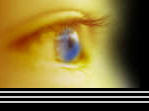There are no traditional techniques specifically for entering madspace, for there has never been a tradition dedicated
to its exploration. But having examined the methods I have used, and having learned some of the ways others have gone about
it, I have noticed that there tend to be some common techniques. Generally, they all center around the concepts of “seeding”
and “mapping”. They form the core of what is called “the art of memory”, which was a science taught
in ancient Greece and Rome devoted to improving learning and creative thinking.
The eureka technique is designed to make the eureka moment more likely to occur than normal.
It cannot come in direct response to deliberately trying to experience it. Experiencing it is, ultimately, a matter of accident.
But this technique will tend to make the user accident-prone.
1) The first step lies in picturing your goal. This means the problem you
want solved being solved, or the subject you are studying being observed. This goal should be concentrated upon while meditating,
or at least with a calm clear mind.
2) The second step is to seed the mind with relevant information. Pull together
all the written material that is relevant to the problem at hand. Scan it rapidly. Looking over a page a second would not
be too fast. The point is not to understand it consciously at all but instead to get it directly into the subconscious mind.
It is important to vary the speed at which you scan. Sometimes go faster,
and sometimes slower. Spend time once in a while picking out one detail or another and focusing on it very much, even thinking
about it consciously. It is also important to go back and forth between one section and another. Do not, generally, go in
order from start to finish.
If you have no written material to study, and no diagrams to look at, then
you can do something similar mentally. Just review everything you know mentally, never stopping to consider it but recalling
and reviewing it rapidly.
3) The third step is forming a map of what you have been studying. Build
up a picture in your mind of the problem you are working on. Then surround it with pictures of various parts of the problem,
or different points of view of the problem (or subject of study). Draw lines connecting each of these to your picture of the
problem itself. Then for each of these parts of the problem, draw further lines connecting them to pictures of parts of those
parts, or subcategories of those points of view. You should end up with a sort of fractal image, of a bunch of branches coming
off of the central picture with further branches off of each branch. This is a form of mental mapping that has been shown
to be effective in improving memory and creative thinking. It will be most effective if you use that kind of mind map known
as a memory palace, where for each picture you have a room in a place you know very well. The mind is built to remember locations
very well, and this will assist in the effectiveness of the mapping.
By trying to construct the map's image, your subconscious will start analyzing
the information you have exposed it to, trying to make sense of it. This starts to organize the subconscious understandings
in much the same way that traditional study does. It also starts spreading them out through the mind. This encourages metanoia.
Once you have built up enough understanding, further concentration will tend to trigger the conversion experience resulting
in a eureka state.
4) The last step is triggering the metanoia experience. Once you have seeded
your subconscious mind and built up a mind map, the last step is to go back to studying, but this time in the normal fashion,
with conscious focus and attention. Try solving problems like you already understand the subject. If the “density”
of information in your mind is high enough, the eureka moment will likely be triggered, even the full unitary state of madspace,
which is the eureka moment extended.

